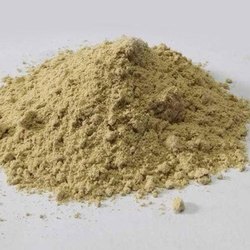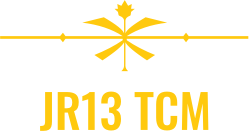Weak herbal products can easily enable
an illness to become entrenched and chronic.
Here are 8 pearls of wisdom to help TCM students prepare for practice and help seasoned clinicians update and improve their practice.
1) Junk herbal extracts are found everywhere . . . Including in the hands of otherwise brilliant clinicians.
Extremely weak herbal products are found among leading brands, unheard of brands, brands with a low price, with a high price; anywhere. They can be found with mesmerizing, high power marketing campaigns, and with sincere celebrity endorsements. There are popular decades-old brands on the market today that should have gone extinct long ago. How to choose the best of the best: See our Vital Signs page.
2) The marketing idiom “Best Quality” is employed by all brands past and present.
So, does that mean that all brands are equally as potent, more or less? Nothing could be further from reality. Creative marketing can make a brand that really wants to believe it’s the “Best Quality”, appear as such; even if it’s actually weak and incapable. The fact is, the variation in respective potency levels, even between popular brands, is immense. Which are stronger and which are weaker? The failure to check (VITAL SIGNS page) could result in a minimum of outstanding clinical achievements.
3) More attention would be paid if clinicians only knew how bad it gets.
No clinician should be prescribing the popular herbal extract pictured to the right. Why? Because it’s stale and lifeless – contradicting the claim of the “USE BY” date. Overprocessed at its beginning, then left without preservatives, the taste is what exposed this feeble product; no high-tech analyzing equipment needed (see VITAL SIGNS page). Before choosing this commonly prescribed and highly advertised brand for your patients, notice what it has to say about itself . . . The way this product tastes is a statement of weakness.

4) Dehydrated tea is highly processed; skepticism is warranted.
The extract shown above is no different from many others in the marketplace. Over-processed and inadequately preserved, the worst brands taste chalk-like, and the weak are the norm. The mass manufacturing of TCM exists to “treat the masses”, and like with fast-food, trade-offs accompany the convenience. Dried teas have their place, but be aware of their disadvantages.

…Imagine if this pasta/shrimp dish was processed like the TCM product pictured above: some ingredients overcooked, oxidation racing from the moment it was dehydrated to a powder, no refrigeration, and 4 months later it’s in front of you on the dinner table… Whether dinner or medicine, simply tasting it would point to a weak and lame capability. Taste is crucial when appraising potency levels, and sure, some bitter or sweet tastes can survive mass production disadvantages, but overall, judging by the taste, it’s reasonable to suppose that the TCM product pictured above would accomplish little beyond placebo. Finding a more effective brand and avoiding brands like the one pictured above is easy: VITAL SIGNS page.
5) Distractions.
Many businesses compete to ‘act in a clinician’s best interest’… A clinician must be vigilant. We read the words, we see the pictures, we’re led to optimistic conclusions. From the world of creative marketing, a shiny and complex industrial wonderland of expertise aims at the imagination. Visualizing desired outcomes, clinicians want to be part of that winning team.
Compelling on the face of it – Research, Clinical trials, Endorsements… A clinician need only make the purchase. But beware of the business that says, “leave everything to us, we’ll look out for your best interest.” Perhaps the goal is to keep the product from a clinician’s taste buds where viability can easily be put to the test. The clinician who prefers to be in control knows that it’s the intensity of taste that exposes the herbal medicine’s potential.

“…I just tasted an herbal extract from my pharmacy. Though it was “concentrated”, it had only a little flavor. It should possess a frightfully sour taste. When I asked the manufacturer’s rep to explain, he proudly directed me to their website to see the pictures of massive growing fields, color-rich herb samples, and rooms of complex equipment … Perhaps he’s never tasted the brand’s manufactured end product: a medicine with little benefit for my patients.”
6) Convenience vs. effectiveness: Clinicians must be thoughtfully aware of trade-offs.
As discerning clinicians, first we work to uncover the truly potent TCM that will surely make a difference; only after, do we consider the convenience question, e.g., strong tasting liquids vs. easy to take pills. We believe that when herbs are critically important in a treatment protocol, the discerning clinician and motivated patient would likely choose effectiveness over the ease of administration.
7) A clinician should never stop updating a practice (no practice can afford to rest on its laurels).
Quality fade is a gradual decline in product quality over time. In most cases, for any given product, customers aren’t likely to notice a small decline in quality from one shipment to the next. But when comparing units over a longer stretch of time, like from one year to the next, the drop in quality is more obvious.
8) Trust but verify… We can’t rely on the people selling something for unbiased information about what they’re selling.
It’s so seductive to follow the leader. But when choosing a brand of herbal extracts, if we’re not personally testing, we’re guessing – without any solid information, and relying on familiarity or biased influencers. It’s gambling in a marketplace where the potency differentials are so high, the odds are stacked against us. Our patients expect more – and it’s not a smart way to run a business.
9) Let’s say, you’ve tested a brand using the method on page VITAL SIGNS; it tested weak. Is it smart to simply increase the dosage level as compensation?
Industrial preparation methods, especially drying a tea into a powder, will degrade different herbs to varying degrees; Meaning certain herbs are rendered virtually ineffective, while others change little, and the large majority of herbs are scattered freely somewhere in between these two extremes. As such, it’s impossible to build a powder or granule prescription accurately because the potency level of each herb in the formula is an unknown. Such imbalanced prescriptions work poorly, and increasing the dosage amount in an attempt to compensate will make the problem worse with unpredictable effects and side effects. . .
Here’s an example of what could go wrong: Because the herbal product was bargain priced, it was assumed that the potency was low. So, the clinician prescribed a high dosage of the 2-herb formula. The main herb in this simple formula is difficult to digest. The second herb was there to aid in its digestion. Later, the patient experiences acute digestive discomfort. Why? Factory over-processing greatly diminished the capability of just one of the 2 herbs – the digestive herb. The other herb, the hard to digest one, was left unchecked to injure the gastro-intestinal system causing the patient’s discomfort. The higher the dosage, the greater the undesired result.
